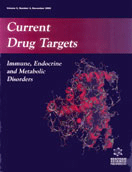Abstract
The demonstration of the i) acquired protective immunity in adults living in endemic areas, ii) cure of malaria patients with passive transfer of specific immunoglobulins, and iii) protection conferred by vaccination with sporozoites attenuated by radiation, justifies the search for a malaria vaccine. Given the improbability that a vaccine directed against a single antigen will be completely protective, the preferred option is to combine several antigens of different stages of the parasite in a multi-component multi-stage vaccine which is likely to protect both the travellers and the populations living in endemic areas. Potential manufacturing technologies include recombinant proteins, synthetic peptides and DNA vaccines, the relevant genes encoding malaria antigens being inserted into a plasmid or a live vector such as vaccinia or poxvirus. A number of human trials using different antigens and technologies have been carried out in the last ten years. Three vaccines have undergone safety and efficacy testing in the field. SPf66, comprising a linear polymerised synthetic peptide with several distinct epitopes, has been extensively evaluated in different epidemiological settings. The efficacy overall was 23%, but was only 2% in African infants, the most susceptible group. The circumsporozoite recombinant protein fused with the antigen S of the hepatitis B virus and formulated in a potent adjuvant (RTS,S) led to a high, but short-term, level of protection against infection and disease in Gambian adults. The first pure asexual blood-stage vaccine comprising three antigens of the merozoite stage (MSP1 & 2 and RESA, Combination B) had an efficacy of 62% in reducing parasite density in Papua New Guinean children. A malaria vaccine that can reduce the burden of disease in the most affected populations is thus an achievable goal, and each trial provides additional knowledge about mechanisms of protection as well as about new vaccine technology.
Keywords: malaria, falciparum, vaccine, trial, immunization, parasite
 2
2


















